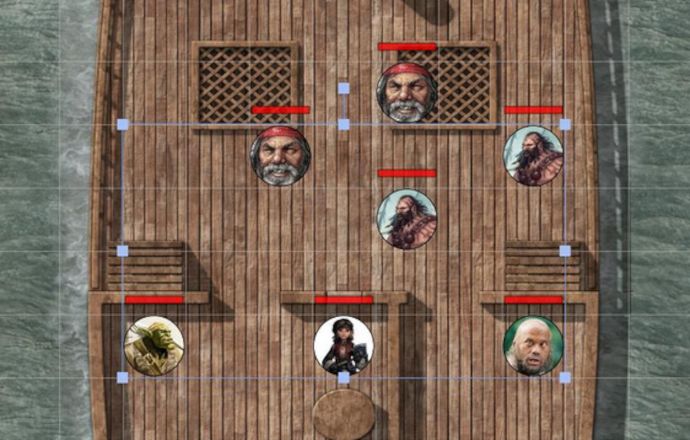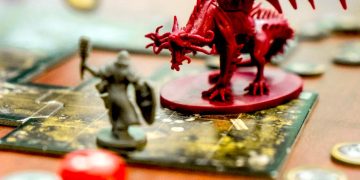Dungeons & Dragons is a collaborative storytelling game that relies mainly on two things: imagination and dice.
The imagination determines what the player wants to do, while the dice determine how successful the player is at whatever they set out to do. Without imagination, the dice serve no function.
But not all D&D campaigns demand the same amount of imagination from the players.
Some dungeon masters may choose to use battle mats with grid-based positioning for D&D miniatures. The miniatures represent the players and the battle mat represents the scenery, environment, and interactables.
When playing online, DMs can use tools like Roll20 or Tabletop Simulator for digital battle mats and digital miniatures.

Other DMs—who some might consider to be "purists"—elect to throw out battle mats and miniatures in favor of an imagination-only approach to D&D.
This is called the theater of the mind because everything takes place in the minds of the DM and players. There are no physical representations of what's happening in the story.
How exactly is D&D played in the theater of the mind? What are the pros and cons of theater of the mind? Let's take a look.
Theater of the Mind, Explained
Playing D&D with the theater of the mind means you're playing without any visual representations of what's occurring in the game. Instead, everything is in the imagination of the players and the dungeon master.
Most role-playing encounters actually play out this way without you having to think too much about it.
You tell the DM what you want to do, then the DM tells you what you see, what characters and environments look like, whether the situation looks dangerous or welcoming, etc. You tell the DM what you want to do in reaction to that, and on it goes.
In theater of the mind, the whole game plays out like that. It's no more than a conversation between the DM and players.

So when a pack of goblins ambushes the party from behind the tree line, the DM needs to describe the goblins, their positions, what they're wearing and wielding, how menacing they look, and everything else about the scenario.
It's just as important during exploration, too.
Instead of moving miniatures around a grid-based mat, the players say they're moving and the DM explains what they see.
For example, the players may approach a fork in the path. The DM explains what they see down each of the two paths. The players choose a path, and describe how they approach it: whether they're wary of traps, or they're rushing to make a delivery, etc.
A good dungeon master deals with these situations quickly by having a strong visual in their mind of what the scenario looks like. They must be as imaginative and descriptive as possible to paint a mental picture for the players.
To put it simply, theater of the mind in D&D is played with only imagination and dice, no other props.
Theater of the Mind: Pros and Cons
The Pros of Theater of the Mind
- Lets the players use their imagination to create interesting scenes
- Forces DMs to get creative
- Allows for flexibility in combat with less worrying about space
- Far more affordable than minis and maps
- Can be more immersive if the players are able to focus
- Painting minis is time-consuming and requires artistic ability
- Manually drawing maps is time-consuming and printing them is expensive
The Cons of Theater of the Mind
- Confusing to keep track of where everyone is
- Hard to determine the range of attacks and spells
- Difficult to keep some players focused on the game
- Exploring is difficult without a visual aid
- Minis and maps are fun to play with and collect
- Challenging to enforce rules without visuals to back up claims
Is Theater of the Mind Right for You?
In the end, it really comes down to your personal preference—or more accurately, the preference of the D&D group.
Some people don't have great imaginations and need a more visual representation of what they're working with. Others find that miniatures and maps help get them more involved. And there are those who prefer the flexibility of imagination-only play.
For me? I prefer to use maps and minis for combat encounters and dungeon exploration, and I prefer theater of the mind for role-playing encounters (e.g. tavern) and open world exploration (e.g. walking through plains or a forest).
If you're on a budget or if you don't want to invest too much into D&D just yet, theater of the mind is a great way to get started with minimal spending.


